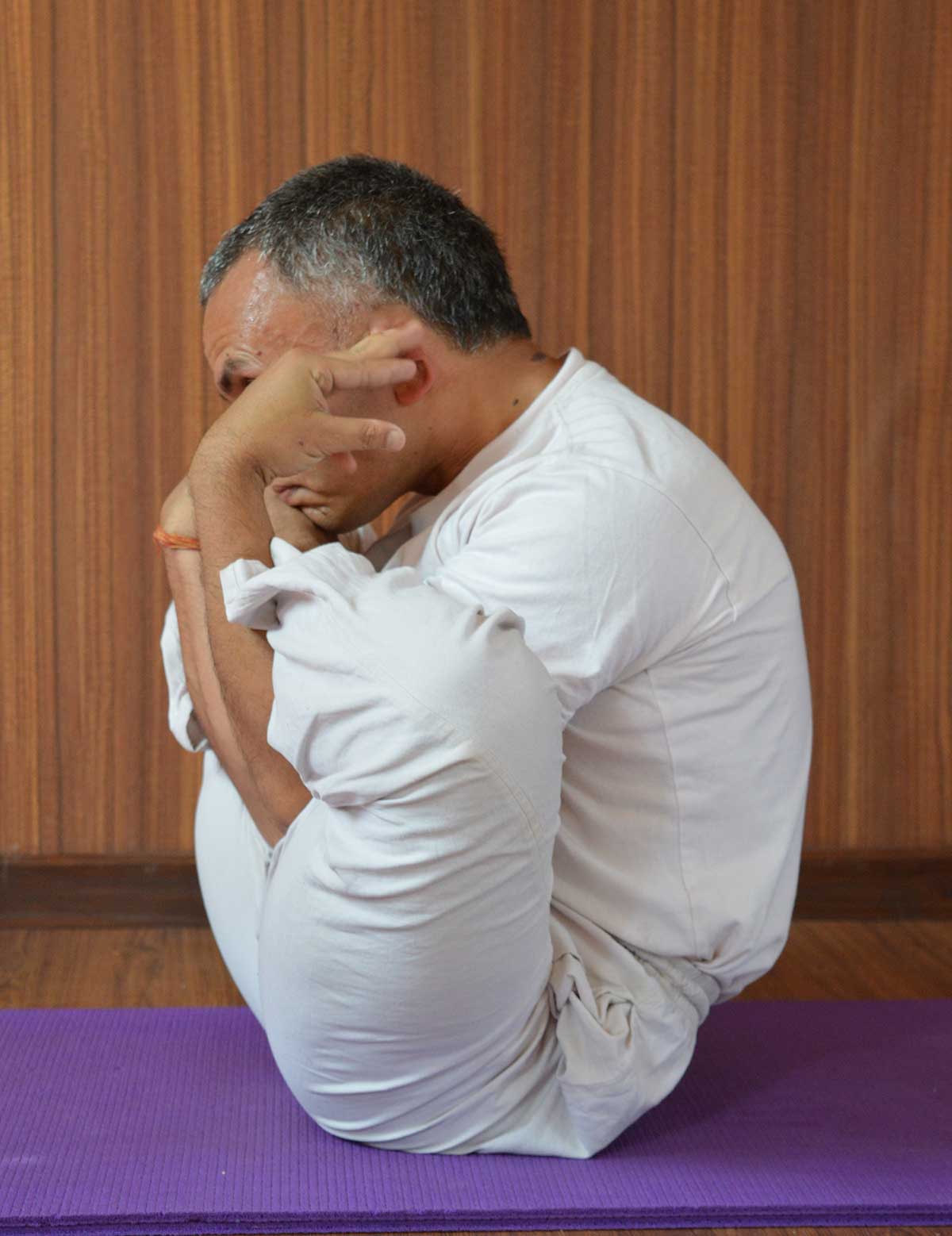
25 Dec 2020 HYN Himalayan Yoga Academy
Kookkutaasana-bandhastham karaabhyaam dhritakandharam;
Peetham koormavaduttaana-metaduttaana-koormakam !!2.33!!
Practicing kookkutasana, and then holding the shouders in both hands in kookkutasana and straightening the body like a tortoise is called Uttana Koormasana.
Introduction
Uttana Koormasana is an Asana. It is translated as Inverted Tortoise Pose from Sanskrit. The name of this pose comes from ‘uttana’ meaning intense stretch, ‘kurma’ meaning tortoise, and ‘asana’ meaning posture or seat.
In Sanskrit, ‘uttana’ means ‘supine’ and ‘koorma’ means ‘tortoise’. The posture is in imitation of a tortoise in the supine position, hence the name Uttana Koormasana or Upside-Down Tortoise Pose. It is a further development of Kukkutasana (Cockerel Pose). We teach typical Aasana mentioned in Hatha Yoga Texts here at Himalayan Yoga Academy .
Process
From a foot-look, just as in Padmasana (Lotus Pose) by placing, place the right foot on the left thigh and the left foot on the right thigh. Insert the hands between the thighs and the calves up to the elbows. Now hold the neck by the hands, making a finger lock, and lie on the back. Maintain the posture as long as possible and release the posture by opening the finger-lock and coming to the sitting position. We can simply do Uttana koormasana from Sukhasana for beginners.
Special requisites of Uttana Koormasana
- A person with a recent or chronic injury to the hips, shoulders, neck, or back should not practice.
- Also, if suffering from muscle pull and cramps should not practice this asana.
- This is also a good exercise to control irregular menstruation or painful cramps on or during the menstruation period.
- This is also a fat shedder which is evident as one bends down and massages the stomach holding in the organs with a locked inhale.

Variations
There are many variations of Uttana koormaasana performed in Sukhanasana, Padmasana, and Vajrasana as well. This asana can be practiced in a vertical position, balancing on the tail bone. This variation is also called Garbhasana.
Benefits
- Massages all the internal organs and gives back massage
- Improves digestion and absorption
- Accelerates the circulation of fresh blood around the entire body
- Removes stagnant blood from the muscles
- Induces calmness and stillness
- Manages the anger, nervous disorders
- Keeps the vertebral column flexible
Contraindications
- Avoid doing it if pregnant. The pressure that is caused in the lower abdomen will cause uneasiness, making breathing fast and hard.
- Understand your body: If your muscles around the hamstrings and the spine are too tight and stiff, it is at best not to practice this.
- If you are suffering from sciatica, make no attempts at this. The pressure to the hip and the extension of the lumbar region will exert more pressure on the nerve that will affect the whole leg.
Initial practice notes
Kurmasana is an advanced pose, and it takes a certain amount of time to get into it appropriately. Do it under the guidance of a yoga instructor to make it easier for you. This is one of the Asanas prescribed in Hatha Yoga Pradipika and Gheranda Samhita 2.33!
